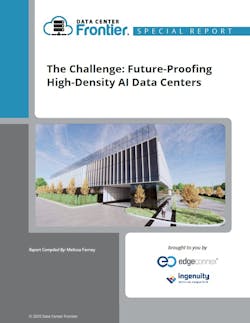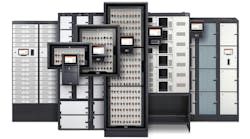We continue our article series on future-proofing high-density AI data centers. This week, we’ll discuss how modular reference designs deliver speed and adaptability.
Achieving operational excellence in high-density AI data centers begins with adopting repeatable, modular reference designs. These standardized blueprints enable rapid deployment by allowing data center operators to replicate proven configurations across multiple sites, reducing design complexity and accelerating project timelines. Modular designs also promote supply chain efficiency, making bulk procurement of critical equipment such as generators, UPSes, switchgear, and cooling units feasible, mitigating lead times and minimizing material shortages during mass deployment.
This standardized, yet adaptable approach helps facilities to respond quickly to customer demands without sacrificing technical rigor or performance. The ability to configure facility components modularly also supports iterative upgrades and expansions, allowing operators to scale capacity and density in line with evolving AI compute requirements.
Operational readiness for liquid cooling in the data center
The complexity of liquid cooling and advanced electrical systems demands rigorous operational discipline. Procedures govern everything from routine commissioning and system checks to exceptional event responses, ensuring safety, reliability, and continuity. SOPs, MOPs, and EOPs must be specifically tailored to the nuances of high-density AI infrastructure.
Cross-functional teams, combining expertise from engineering, construction, operations, and risk management, collaborate throughout the facility life cycle. This integrated approach streamlines communication and accountability, enabling seamless transitions from design to construction into steady-state operation. Clear delineation of responsibilities, especially in managing liquid cooling systems, which require specialized protocols such as rack flushing and leak detection, further mitigates risk and enhances system uptime.
Mitigating spikey workloads
AI workloads are characterized by highly variable and often spiky power consumption patterns, challenging traditional power distribution models. To effectively manage these fluctuations, facilities are incorporating BESS to smooth demand peaks and provide rapid response capabilities. These energy storage solutions enhance grid stability within the data center and reduce stress on upstream infrastructure.
Ensuring resiliency in such an unpredictable environment requires redundancy across all critical systems — power, cooling, and network — combined with real-time monitoring and automated failover mechanisms. The integration of sophisticated controls and predictive maintenance further supports uninterrupted operation, fortifying facilities against potential disruptions caused by rapid workload shifts or equipment anomalies.
Through modular design, robust operational protocols, and advanced power management strategies, data centers can confidently scale high-density AI deployments while maintaining the reliability and performance critical to mission success.
Download the full report, The Challenge: Future Proofing High-Density AI Data Centers, featuring EdgeConneX, to learn more. In our next article, we’ll explain why market leadership requires a shift in approach—away from custom, built-to-suit projects to standardized reference designs.



